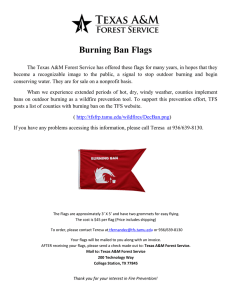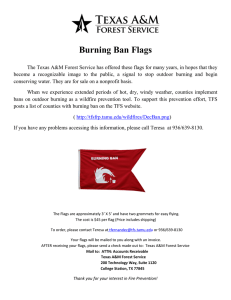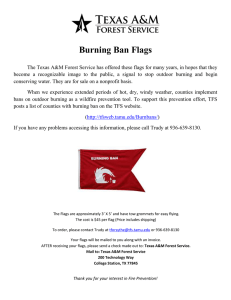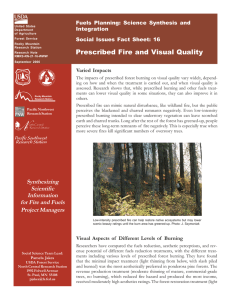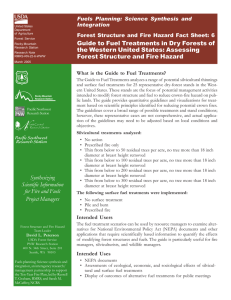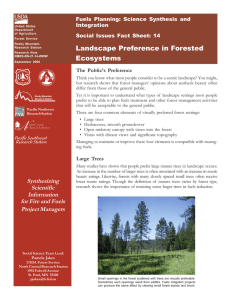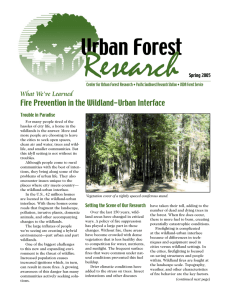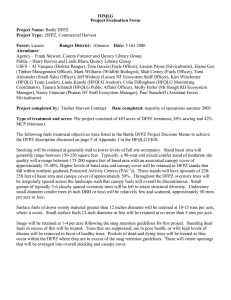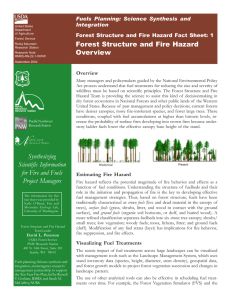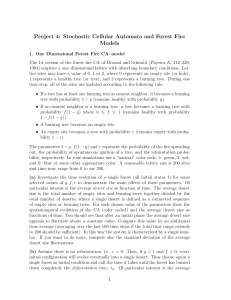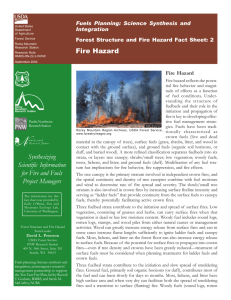Experimental Thinning and Burning of Ponderosa Pine Forests in Southwestern
advertisement
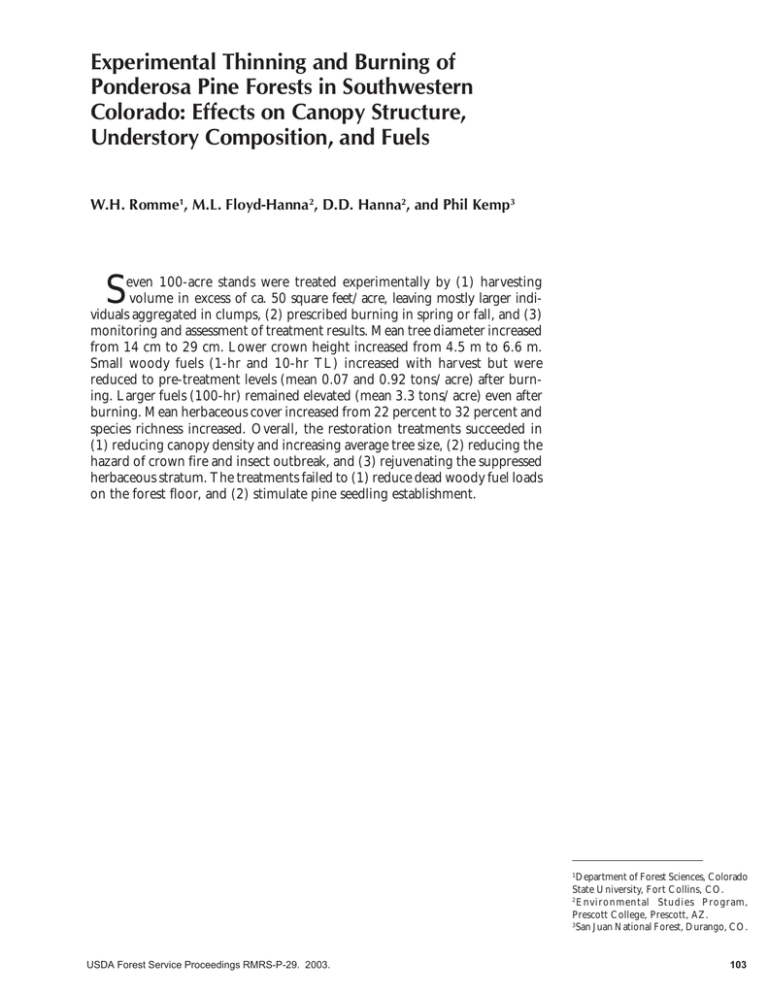
Experimental Thinning and Burning of Ponderosa Pine Forests in Southwestern Colorado: Effects on Canopy Structure, Understory Composition, and Fuels W.H. Romme1, M.L. Floyd-Hanna2, D.D. Hanna2, and Phil Kemp3 S even 100-acre stands were treated experimentally by (1) harvesting volume in excess of ca. 50 square feet/acre, leaving mostly larger individuals aggregated in clumps, (2) prescribed burning in spring or fall, and (3) monitoring and assessment of treatment results. Mean tree diameter increased from 14 cm to 29 cm. Lower crown height increased from 4.5 m to 6.6 m. Small woody fuels (1-hr and 10-hr TL) increased with harvest but were reduced to pre-treatment levels (mean 0.07 and 0.92 tons/acre) after burning. Larger fuels (100-hr) remained elevated (mean 3.3 tons/acre) even after burning. Mean herbaceous cover increased from 22 percent to 32 percent and species richness increased. Overall, the restoration treatments succeeded in (1) reducing canopy density and increasing average tree size, (2) reducing the hazard of crown fire and insect outbreak, and (3) rejuvenating the suppressed herbaceous stratum. The treatments failed to (1) reduce dead woody fuel loads on the forest floor, and (2) stimulate pine seedling establishment. 1 Department of Forest Sciences, Colorado State University, Fort Collins, CO. 2 Environmental Studies Program, Prescott College, Prescott, AZ. 3 San Juan National Forest, Durango, CO. USDA Forest Service Proceedings RMRS-P-29. 2003. 103 104 USDA Forest Service Proceedings RMRS-P-29. 2003.

